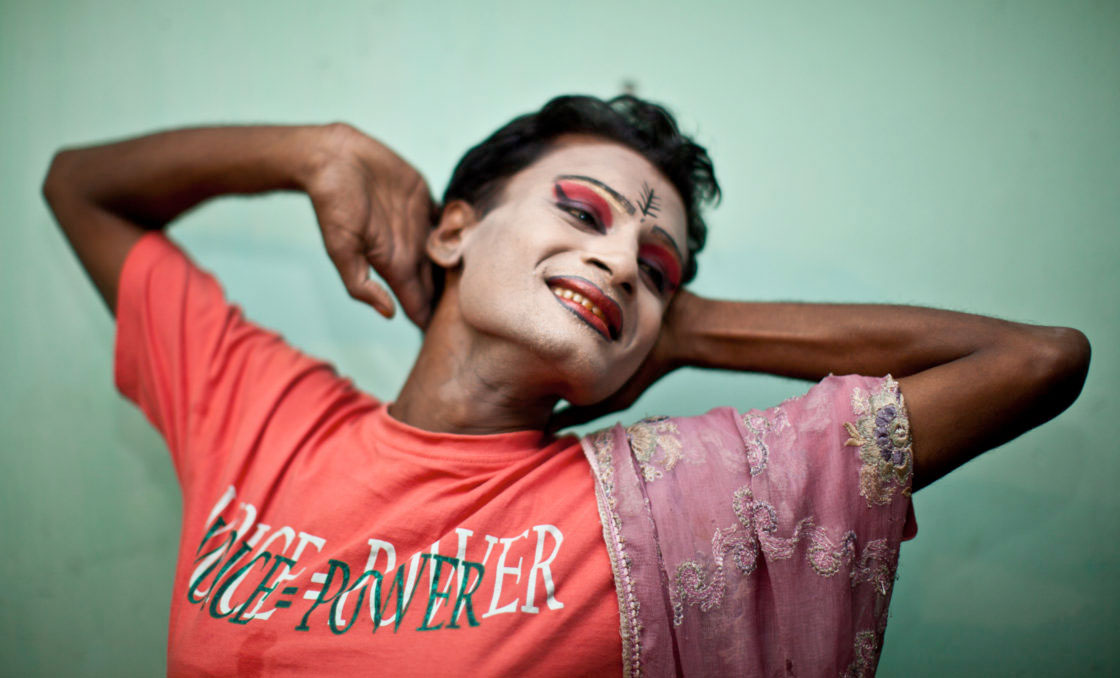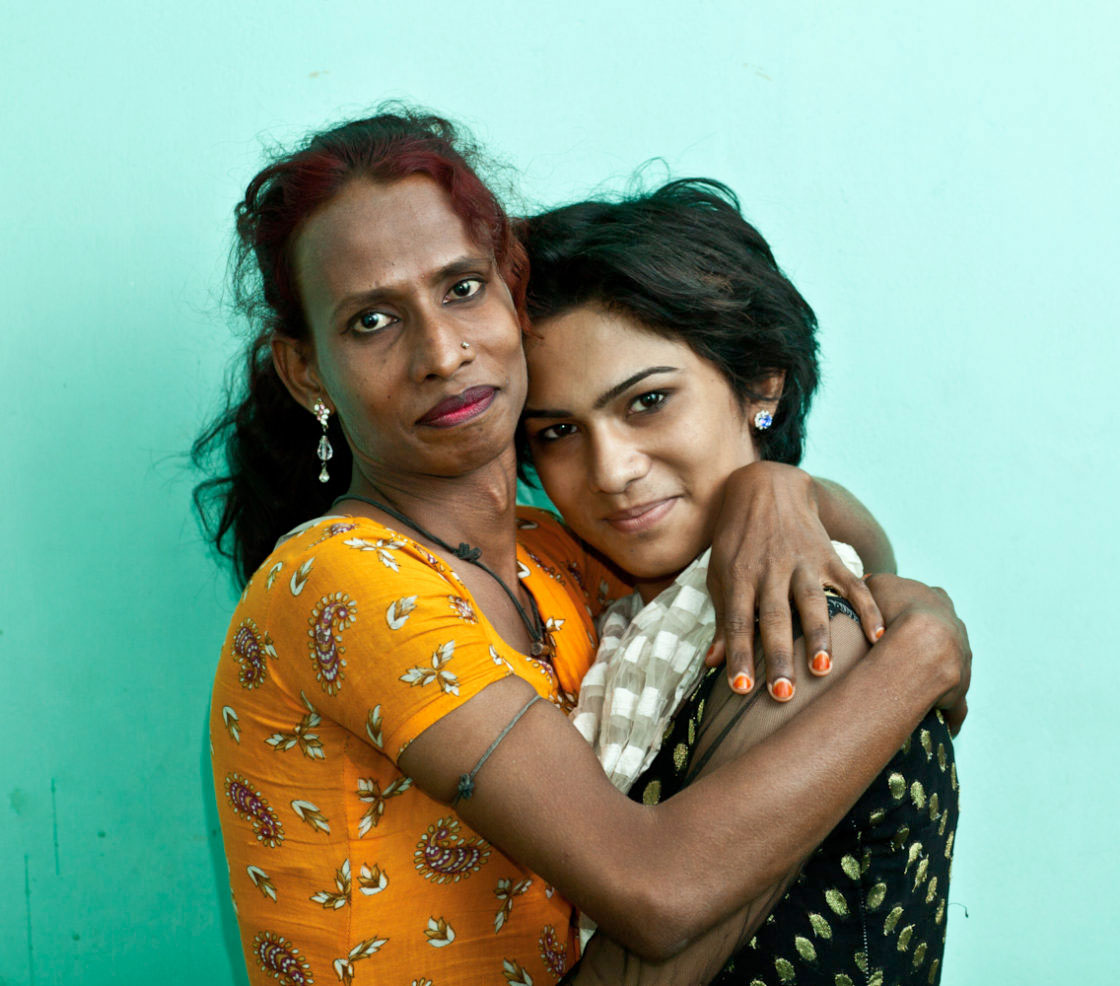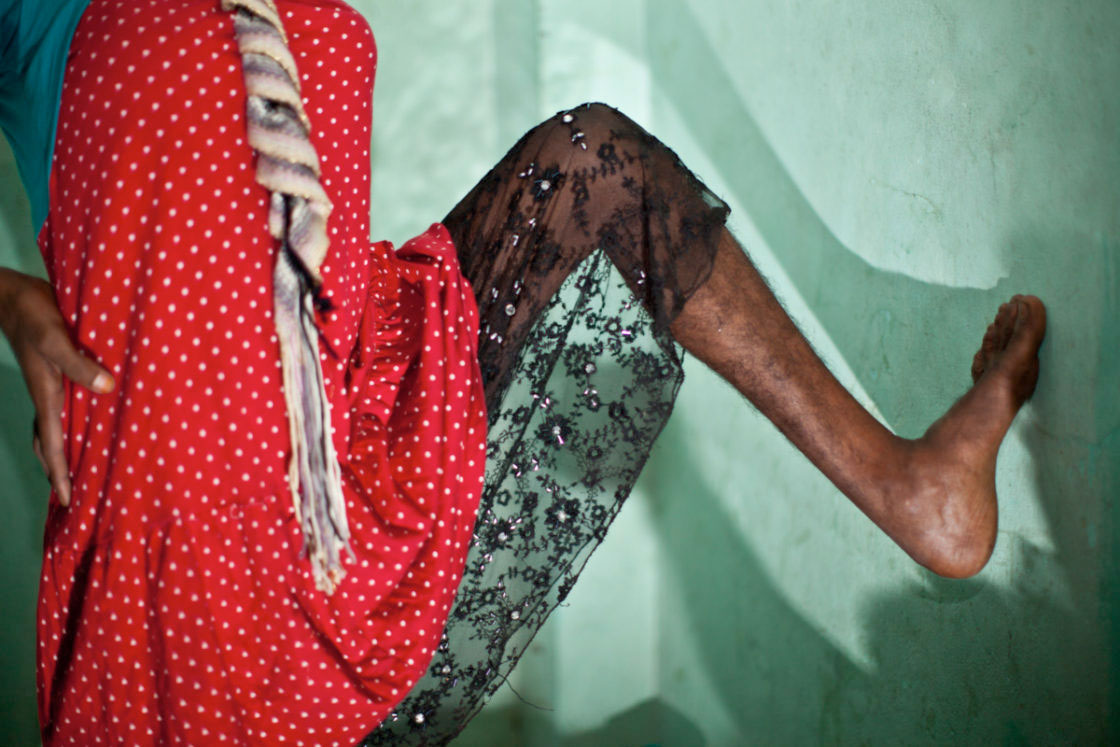
Neither Man nor Woman, photo essay by Jan Møller Hansen
The transgenders in Bangladesh, and in other parts of South Asia, are locally known as Hijras. In the West, they are known as hermaphrodites or eunuchs. The transgenders have been part of the South Asian landscape for thousands of years. The transgenders are born male but grow up feeling like and dressing as women. Marked out because of their sexual difference, they are a despised and neglected minority.
It is not that easy to define a hijra. There are differences between the cultural definition and the variety of individual lives and experiences. Hijras are culturally defined in terms of their traditional occupation as performers on auspicious occasions, but not all hijras perform. Some hijras see them themselves as neither man nor woman, but there are also many who very feel and behave like women. There is also the definition that relates to physical sexuality. Many think that most hijras are hermaphrodites, but that is not true. Most hijras are probably “made” rather than “born that way”. Becoming a real hijra often means going through the emasculation ritual by removal of the penis and testicles. Ideally, the emasculation operation is performed by a hijra called a dai ma (midwife), a clear and strong symbolic statement of the emasculation as rebirth. The emasculation ritual transforms an impotent man into a potentially powerful person, The emasculation operation is done together with various rituals and blessings, which is not described here in detail.


Some is of the opinion that the emasculation distinguishes real hijras from the fake. The emasculation is the major source of the ritual power of the hijras. It is the source of their uniqueness and the most authentic way of identifying oneself as a hijra and of being so identified by the larger society. It is the emasculation that links the hijras to two of the most powerful figures in the Hindu religion, Shiva and the Mother Goddess, and it is emasculation that sanctions the hijras’ ritual role as performers at marriages and births.
As ritual performers, they are viewed as vehicles of the divine power of the Mother Goddess, which transforms their impotence into the power of generativity. The faith in the powers of the hijras rests on the Hindu belief in the Shakti – the potency of the dynamic female forces of creation that the hijras, as vehicles of the Mother Goddess, represents.
The performances are the most respectable and prestigious way to earn a living within the hijra community and an important source of income of the hijras’ claim to respect the larger society. The sexual ambiguity of the hijas as impotent men – eunuchs – represents a loss of virility, and this undoubtedly is the major cause of the fear that they inspire.
The hijras can praise the good qualities of families, but they also can insult them; they can bless one’s house with prosperity and fertility, but they also can curse it with infertility and other kinds of misfortunes. The hijras are treated with a combination of mockery and fear. The hijras often engage in homosexual prostitution. Many hijras are both performers and prostitutes.
The hijras are fighting for their rights, and they want to be treated equally among other people. They want others to know that they are also normal human beings. They want to be allowed to lead a normal life like others. The hijras claim that others do not understand their life, gender and sexuality. They want the society and the government to recognise them with equally rights as other human beings. No public institutions, private companies or individuals want to employ hijras, and they do not get admitted to schools or colleges. They have limited access to legal and health services. It is nearly impossible for hijras to vote or to get a passport.







Although the hijras often provoke horror or ridicule, they have traditionally had a role to play on the margins of society as entertainers and as bestowers of curses and blessings. They are often surrounded by fear and superstition, and sometimes they are hired to remove bad luck for new buildings under construction, to bring good luck for new-born babies or to entertain at weddings.
The hijras are living at the bottom of society and their traditional ways of making a living are under threat. With television and many other forms of entertainment, their roles as performers and entertainers in local communities are diminishing. They often make a living by walking around the streets of Dhaka and other cities collecting money from shop keepers, bus and train passengers or by prostitution. The hijras suffer from social stigma and are discriminated against.
The hijras live in small closed groups led by a guru (teacher). Few are born hermaphrodites and some undergo ritual emasculation at puberty or as adult. The hijras have a very strong sense of identity and belonging to the group. The hijras are usually excluded and abandoned by their own families and relatives. Many people do not like transgenders – they feel uncomfortable in their company, and their traditional perceptions on traditional gender roles are often seriously questioned.
When I met the hijras in Dhaka and in other cities in Bangladesh, I could clearly feel their proudness and great dignity being hijra and different from other people.
(by Jan Møller Hansen)










